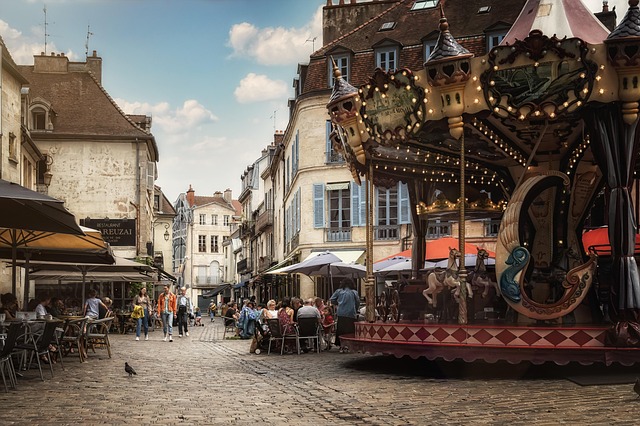The urban landscape is evolving at a rapid pace, and with that evolution comes a pressing need to rethink how we move through cities. Traditional vehicular traffic not only congests streets but also contributes significantly to greenhouse gas emissions. In this context, the concept of városi utazás—city travel—has gained new importance, as it focuses on the ways people navigate urban spaces with minimal environmental impact. Sustainable mobility solutions, ranging from electric bikes to smart public transport, are becoming essential components of a carbon‑neutral future.
Understanding the Carbon Footprint of Urban Movement
Every trip a commuter takes, whether by car, bus, or train, adds to the overall ecological footprint of the city. According to recent studies, private vehicles account for nearly 70% of city transport emissions in many metropolitan areas. This is largely due to inefficient fuel consumption, traffic congestion, and the fact that many journeys are short and could be made on foot or by bicycle. By analyzing the carbon footprint of individual trips, city planners can identify the most impactful areas for intervention.
- Emission per kilometer per vehicle
- Fuel type and combustion efficiency
- Road network design and traffic flow
The Rise of Green Technologies in Urban Transit
Technological innovations are at the heart of modern sustainable mobility. Electric buses, autonomous shuttles, and hydrogen fuel cell vehicles are being tested and deployed in cities worldwide. These technologies reduce direct emissions, lower operational costs, and often provide quieter, more comfortable rides. In addition, the integration of renewable energy sources—such as rooftop solar panels on bus depots—helps to power fleets entirely with clean electricity.
“The shift to electric public transport is not just a trend; it is a necessity for meeting Paris Agreement targets,” says Dr. Elena Rossi, an expert in urban sustainability.
Infrastructure for Low‑Impact Travel
Beyond vehicle technology, the physical infrastructure of a city determines how easily residents can choose sustainable options. Dedicated bike lanes, protected turning points, and pedestrian plazas encourage walking and cycling. Moreover, the adoption of smart traffic lights—devices that adapt signal timing based on real‑time traffic conditions—helps to reduce idling time and fuel waste. When city streets are designed with people rather than cars in mind, the environmental benefits are amplified.
Case Study: Bicycle‑Friendly Copenhagen
Copenhagen has become a benchmark for integrating bicycles into urban life. Approximately 50% of daily commutes are made by bike, supported by an extensive network of cycle paths, traffic calming measures, and dedicated parking. The city also uses a lightweight, solar‑powered bicycle-sharing system that can be deployed across neighborhoods. This example demonstrates how policy, culture, and infrastructure can synergize to promote a low‑footprint városi utazás ecosystem.
- Policy incentives for cycling
- Investment in bike infrastructure
- Public awareness campaigns
Smart Mobility Apps and Data Analytics
Data-driven decision making is revolutionizing how cities manage transport. Mobility apps that provide real‑time transit schedules, bike availability, and traffic conditions help commuters make informed choices that save time and reduce emissions. Meanwhile, anonymized mobility data enables planners to identify peak usage times, under‑utilized routes, and areas where service improvements are needed. By leveraging these insights, cities can optimize public transit routes and reduce the need for personal vehicle use.
Car‑Sharing and Mobility‑as‑a‑Service Models
Car‑sharing platforms reduce the number of vehicles on the road by encouraging shared usage. Users can rent cars on an hourly or daily basis, significantly lowering the overall fleet size. Combined with electric or hybrid fleets, these models provide a flexible yet environmentally conscious option for occasional drivers. Moreover, mobility‑as‑a‑service (MaaS) platforms integrate multiple transport modes—buses, trains, bikes, and rideshares—into a single, seamless app, enabling a truly multimodal city travel experience.
Energy Storage and Charging Infrastructure
For electric vehicles (EVs) to become mainstream, a reliable charging network is essential. Cities are investing in fast‑charging stations along major arteries and in residential areas. Battery‑management systems that allow vehicles to discharge energy back to the grid during peak hours—known as vehicle‑to‑grid (V2G) technology—add resilience to the energy system. This symbiotic relationship between transport and electricity infrastructure helps to balance supply and demand while reducing the overall carbon intensity of urban travel.
Policy Incentives for Low‑Emission Vehicles
Governments are introducing a range of incentives to accelerate the adoption of green vehicles. These include tax rebates for EV purchases, exemptions from congestion charges, and preferential parking zones. Additionally, municipalities are setting strict emission standards for new vehicles and phasing out internal‑combustion engines over the next two decades. Such regulatory frameworks create a favorable environment for sustainable városi utazás solutions to thrive.
Community Engagement and Cultural Shifts
Technological and infrastructural changes alone cannot guarantee a shift to greener urban mobility. Cultural attitudes toward transportation play a pivotal role. Public campaigns that highlight the health, environmental, and economic benefits of walking, cycling, and using public transit help to reshape perceptions. Schools and workplaces can contribute by offering incentives for students and employees who choose low‑impact travel methods. When citizens become active participants in the transition, the momentum for sustainable city travel accelerates.
Future Outlook: Towards Carbon Neutral Urban Mobility
The trajectory of urban transport points toward a fully carbon‑neutral system by mid‑century. Advances in battery technology, renewable energy integration, and autonomous driving are converging to make this vision attainable. Moreover, the development of intelligent transport systems—where vehicles, traffic lights, and infrastructure communicate seamlessly—will further enhance efficiency and safety. As cities adopt these innovations, the daily experience of városi utazás will shift from a source of pollution to a catalyst for environmental stewardship.



